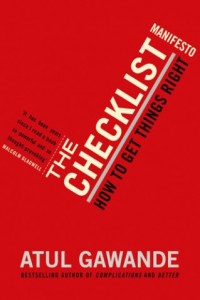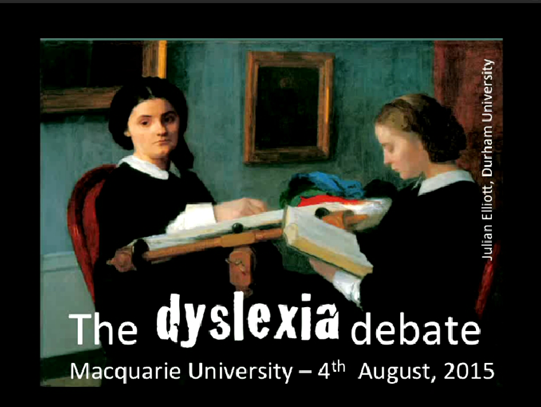IFERI is pleased to present a new paper by Sir Jim Rose, which was written as a response to Professor Julian Elliott’s recent presentation at Macquarie University, Australia.
Please click here to watch the presentation: The Dyslexia Debate
The Dyslexia Debate: A Response by Sir Jim Rose
The range and depth of enlightened thinking that DDOLL (Developmental Disorders of Language and Literacy Network) colleagues have brought to this discussion is riveting. It transcends historic wrangles over the term dyslexia that have done little to take us forward. Belatedly, I should like to add a couple of wild cards to this captivating exchange of views. The purpose in so doing is to explore further what might done to make sure far more of the children within the frame of so-called ‘instructional casualties’ receive consistently high quality teaching of reading and related aspects of literacy. Arguably, if schools could achieve this the benefits to children would be enormous and the need for costly intervention programmes reduced.
First, given that the education profession has access to a vastly greater knowledge of reading development than ever before, why is it that we continue to see confusion, not to say dissent, in schools and teacher training, about the teaching of reading, particularly in respect of phonics and dyslexia?
In the UK, although there has been considerable progress over the last decade, we still suffer from outbreaks of phonic phobia and tiresome tensions between fake opposites, such as, phonics v ‘reading for meaning’. Despite the enactment of a National Curriculum which makes such teaching mandatory, we have not yet achieved universal agreement in schools that teaching children how the alphabet works for reading and writing is crucially important.
The mantra ‘one size does not fit all’ is often chanted against phonics. This suggests that some continue to regard phonics as one of several ‘methods’ from which to select and match to discredited notions of ‘learning styles’, rather than a body of core knowledge and skills that has to be taught and practised. In the case of phonic work, if teachers are not convinced of the value of a regularly applied systematic approach it is hardly surprising that mediocre and poor practice persist. What more might be done to make plain what high quality teaching looks like in this domain?
As Alison Wolf (Review of Vocational Education 2011) said, ‘If assessing learning is hard, assessing the quality of teaching is harder’. Because the latter assessment brings with it concerns about ‘blaming teachers’ for children’s failures in reading it leads to reluctance to tackle what are often straightforward, improvable aspects of practice within the control of the teacher and the school.
England may not top the international league tables of pupil performance but we must be among world leaders in the amount of inspection and testing that takes place in our schools, starting in the primary years. Many years spent as a school inspector observing teaching in England and elsewhere convinced me that there is far more variation in the quality of teaching literacy, including reading, between and within schools than there ought to be. Further, we know the distance between leading and trailing edge teaching is associated with unacceptable variations in pupil performance, and that the impact of poor teaching on children who enter school already behind their peers amplifies their difficulties.
Is it beyond our capabilities to assess the quality teaching without blaming teachers?
My second wild card is to ask what we might learn from other professions. Anecdotes are sometimes useful so here goes…
Last year an unfriendly tree wrote off my car. I survived the crash due to the incredible expertise of the medical profession. This unwelcome event had an upside, however, in that it gave me an opportunity to compare the performance of two life changing professions: medicine and education. I had lots of time to catch up on reading about reading while experiencing our National Health Service at its best. Further, I was able to listen to the 2014 Reith lectures by the acclaimed surgeon Atul Gawande. He declared that he was in ‘the disturbance business’ and explored thorny issues, such as, ‘Why doctors fail’. I then read his book: ‘The Checklist Manifesto – How to get things right’ and watched with his TED talk: ‘How do we heal medicine? Many of Gawande’s insights apply to getting things right in education. As a frontline surgeon, he drew upon keenly observed and detailed analyses of medical practice. His concept of our ‘necessary infallibility’ has much to commend it should we dare to explore more forensically why teaching fails while making sure teachers know that the purpose of so doing is to work with them to improve the quality of teaching and achieve better outcomes for children.
Many of Gawande’s insights apply to getting things right in education. As a frontline surgeon, he drew upon keenly observed and detailed analyses of medical practice. His concept of our ‘necessary infallibility’ has much to commend it should we dare to explore more forensically why teaching fails while making sure teachers know that the purpose of so doing is to work with them to improve the quality of teaching and achieve better outcomes for children.
Medicine and education are ‘person-to–person’ services subject to human fallibility and to human ingenuity for solving problems: success is won by learning from our mistakes. Both professions look to research for solutions. They also rely on knowledgeable and skilled practitioners to make sure that as far as possible decisions are ‘evidence-based’ and ‘proven’ in practice. Equally important, they must be capable of making sound judgements when faced with the hard question: ‘what should we do when research is inconclusive, evidence is lacking and doing nothing is not an option?’
Among other things, Gawande suggests that doctors fail through lack of knowledge and, or, ineptitude, that is to say, insufficient skill in applying knowledge. He counts himself among them in these respects. He sees mistakes as opportunities: ’we have an opportunity before us, not just in medicine but in virtually any endeavour. Even the most expert among us can gain from searching out the patterns of mistakes and failures and putting a few checks in place. But will we do it? Are we ready to grab onto the idea? It is far from clear’.
The notion that we should actively build a school and classroom culture that enables teachers and, equally important, enables children as learners, to learn from patterns of mistakes is an idea worth grabbing. Moreover, his ‘Manifesto’ embraces a set of ethical principles and expectations worth taking on board:
“First is an expectation of selflessness: that we who accept responsibility for others – whether we are doctors, lawyers, teachers, public authorities, soldiers or pilots – will place the needs and concerns of those who depend on us above our own. Second is an expectation of skill: that we will aim for excellence in our knowledge and expertise. Third is an expectation of trust-worthiness: that we will be responsible in our personal behaviour toward our charges.
Aviators, however, add a fourth dimension, discipline: discipline in following prudent procedure and in functioning with others.”
For Gawande professional ‘discipline’ is aided by a ‘checklist’ which transforms ‘cowboys into pit crews’. That is indeed a powerful idea – but you must Google his short TED talk to understand it. (Or click at the end of this post to watch it.)
I have rambled on long enough save to ask: is there anything to be said for embracing some of these ideas, including, perhaps, developing a ‘checklist’ for teaching systematic, synthetic phonics?
With special thanks to Macquarie University for allowing us to distribute and use the link to Professor Julian Elliott’s presentation.



Dr Linda Siegel has asked me to post her thoughts on the forthcoming ‘dyslexia debate’ at Durham University regarding whether the term ‘dyslexia’ has outlived its usefulness.
Dr Siegel says:
“I would like to share my thoughts on the use of the term dyslexia. As someone who has spoken out and provided logical arguments and evidence against the discrepancy definition (DD) of dyslexia for over 27 years, I am amazed that the DD refuses to die. One of my colleagues called it the vampire definition of dyslexia. Many people on your panel are still advocating the DD. If dyslexia is defined by the DD, then I agree that the term should be retired. But we are all not wearing enough garlic around our necks and the DD persists.
However, substituting the term reading disability will not solve the problems. What we want is early identification of children at risk, early (and later) intervention involving phonological awareness, phonics, vocabulary, morphological awareness, syntax awareness, and reading strategies, streamlined assessment of people to determine if they have reading problems, and evidence based intervention, preferably within the Response to Intervention (RTI) model.
The fundamental question is whether abandoning the term dyslexia will help us achieve these goals. In North America we did not use the term dyslexia (it was frowned on by the schools) for many years. Only recently has it been “permitted.” We used the term reading disability and we still had to fight for help for these people and against the whole language domination of reading instruction.
Then there are other considerations. What about the people with reading problems? What do they think? Having spoken to many of these people, be they children, adolescents, adults, or parents of children with reading problems, the term dyslexia suits them. Without that term, they describe themselves as stupid and parents and teachers describe them as lazy.
Can we live with the following definition?
Dyslexia is a severe difficulty with accuracy and/or fluency of word and/or pseudoword reading. (One could add) There are usually spelling, writing problems and difficulties with reading comprehension.
Advantages
1. Assessment becomes simple; one needs to give word and pseudoword reading tests. Writing, spelling, and reading comprehension tests could also be given. Analysis of errors can be very useful.
2. No need for the IQ tests or tests of psychological processing
3. Teachers, speech therapists, school personnel, and others can do the testing.
4. Monitoring of progress can easily occur.
Problems
1. Obviously reading is a continuum; it is not clear where we draw the line between problems and typical reading. Note that this is a problem with the term reading disability.
2. What about ADHD, ASD, other conditions, and intellectual handicap? This is still a problem with the term reading disability. Why shouldn’t these other people get help with reading? In regard to intellectual handicap, some common sense is in order. If a person cannot feed or toilet him or herself, then teaching reading is not the issue.
Conclusion
Whatever the term used, dyslexia or reading disability, we still have a long road in front of us. We should turn our attention to constructive ways of solving these issues.”
Please visit the IFERI message forum where we have a thread dedicated to the work of Professor Julian Elliott and the ‘dyslexia debate’ here:
http://www.iferi.org/iferi_forum/viewtopic.php?f=2&t=453
” …what might done to make sure far more of the children within the frame of so-called ‘instructional casualties’ receive consistently high quality teaching of reading and related aspects of literacy.”
Give them individualised teaching? Give them what they need? Assess the fine detail of what they need, and then give it to them? Actually work out what this individual child individually needs. Right now.
The obsession with SP seems to me to be based on deciding what children in future need, from what children in the present can’t do. Or on deciding what current children need based on what children in the past couldn’t do.
What is wrong with looking at this particular individual right now child?
I work in a school that has had a phonics based intervention for low-achieving readers set up since the year dot. Once children are in this intervention, they stay there forever, and then go to secondary school…
A colleague and I have worked at the school for only 2 years. We work out what a child needs. WE DON’T HAVE A PRESET PROGRAMME. If a child needs more phonics, or ‘phonemic awareness’, that’s what we give them. If they need more focus on what their reading materials are actually saying,meaning, we give them that.
WE JUST TEACH THEM TO READ. WHAT IS WRONG WITH THAT? IF OTHERS WANT TO KNOW HOW TO DO IT, THE EXPERTISE AND TRAINING IS OUT THERE.
The pudding proof might be that people are impressed at the progress our children manage to achieve, to the extent that they can actually see it, and want more for other children.
When people slag off (and there is no polite way to express this – it is slagging off, what a vile expression – how terrible!) ‘mixed methods’ they know not what they do. ‘Mixed methods’ is nothing more, nor less, than giving children what they need.
Everyone, all of us, every teacher, parents, know, even Mr Rose knows, that when we give children the opportunities they need, they learn. It is really very simple.
The first children to be subjected to the phonics screening check have not yet reached KS2 SATs.
Dot dot dot.
Hi PL Miller – thank you for your post.
Sir Jim Rose recommended the Simple View of Reading in his national review in England which highlights that there are two main processes of being a ‘reader’ in the full sense: word decoding/recognition (the technical knowledge and skills) and language comprehension.
The actual diagram of the Simple View of Reading is very useful in a number of ways – one being that it helps to broadly ascertain the leaner’s reading profile. The introduction of the Simple View of Reading highlights that, of course, teachers must know their pupils and identify their pupils’ reading needs – be it phonics or language comprehension – or both – and the, of course, teachers should provide appropriately for all their learners.
‘Mixed methods’, however, tends to be understood as promoting the multi-cueing reading strategies whereby children are taught to guess from clues such as the picture, first letters, context and even word shape – this is not a good idea as at least some children will end up with a reading reflex which amounts to a lot of guessing rather than accurate decoding and word recognition.
Further, you mention about your school’s ‘phonics-based intervention’ and the way you have written your posting suggests that you are none too impressed with this state of affairs. It isn’t enough for any of us, however, to think that phonics provision looks the same regardless of the programmes and practices. Indeed, you might have a poor idea about ‘phonics-based intervention’ if your school’s intervention is not working well enough. Perhaps it is the case that the children all receive the phonics intervention whether or not it is fit-for-purpose for them as individuals – in which case, I hope that you are taking that up with the school management.
Yes, we would all agree that when children get the opportunities they need, they will learn – but it is not ‘simple’ when taking into consideration flawed teaching methods. It is large-scale testing of reading levels which alerted people to the fact that different teaching methods affect reading levels.
It is national-scale testing of children’s decoding levels with the Year One Phonics Screening Check in England which is showing that some teachers can teach all their children to reach or exceed the benchmark of the check – whereas other teachers are not nearly so effective.